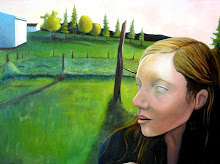I like Mondays at the homestead because we aren't open to the public and everyone who works gets a chance to catch up on things that have been needing to get done, and also to work on research projects. Today was one of those days. Last night before I left Jim gave me a list of locations that I was supposed to research today. The whole point is that we're making drivng tours of the Oley Valley. Basically, people will come to us who want to know about the other important historical places of the oley valley. And there's a lot of them. So we make borchures with directions that people can follow and information on the sights they're going to see.
The brochure I got assigned was entitled "communities and crossroads." Listed for me to look up were places like Douglassville, Amityville, Yellow House, Lobachsville, Limkiln, Birdsboro, Pleasantville, etc. Basically it's a bunch of towns that served as crossroads or communication hubs during the eighteenth century.
The research was slow going. There's a book that would be very helpful for this sort of work, called A History of Berks County by Morton L. Montgomery. The Homestead doesn't have it. So I used alternatives. The Journals of Henry Melchoir Muhlenberg were a big help. So was Oley Valley Heritage by Phil Pendleton. (If you haven't noticed that book is slowly becoming my bible). I also resorted to googling a few things, not that I really like to do that, but desperate times call for desperate measures.
Here's what I found. Johannes Mouns, a Swede, was the first person to settle in what is now Douglassville in 1704. There was a road that linked Reading to Phildelphia in the mid-eighteenth century, and Douglassville was on that road. The White Horse Tavern in Douglassville was a stopover and meeting place for anyone travelling, the first major stop from Reading on your way to Philadelphia. Amityville used to be called New Store. There was a church, tavern, and store there, and it too was also on that Reading/Philly road. Edward Drury owned a tavern there which also served as a meetingplace and communication center. Yellow house was again on that road. The yellow house hotel was establsihed in 1801 as a stopoever for stagecoaches.
Oley valley is nearly ancient when you're speaking in relative terms in American history. I think it's silly when interns grumble that they are assigned a research project. You're getting paid to pull information from primary documents, sythesis it, and make it into something people can use. You're a professional historian! Sort of.
Subscribe to:
Post Comments (Atom)


No comments:
Post a Comment